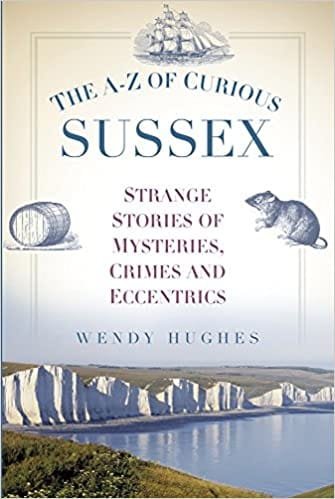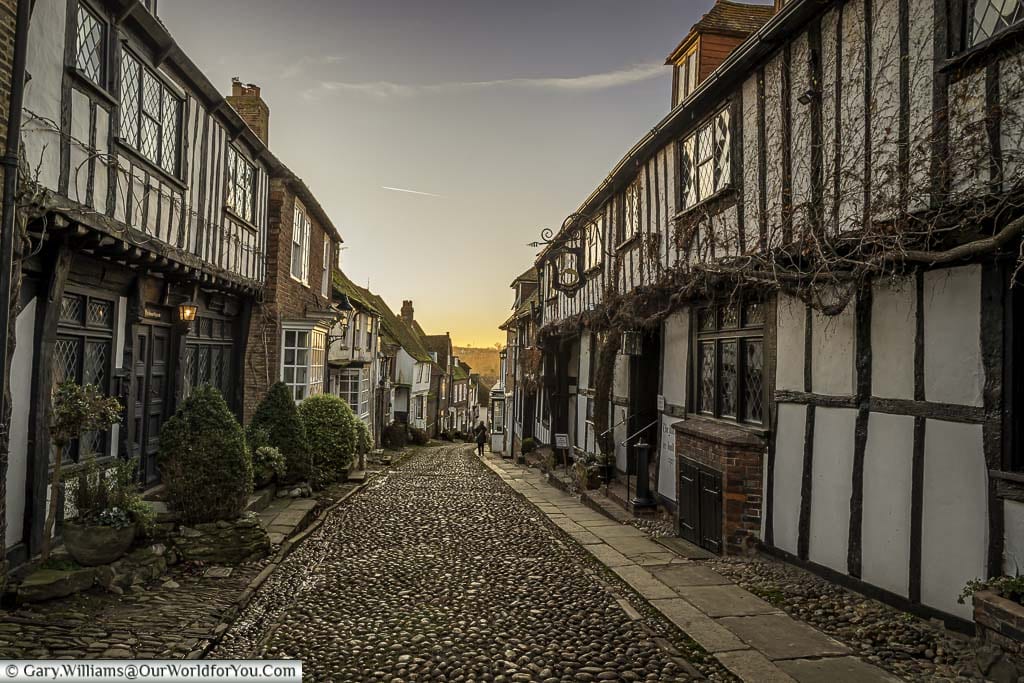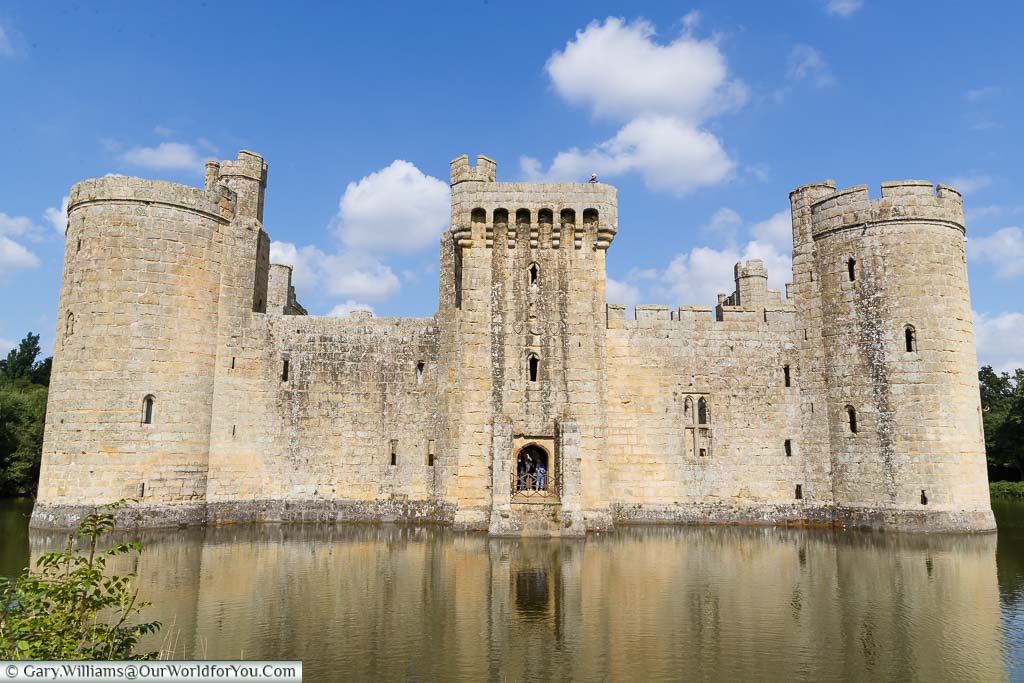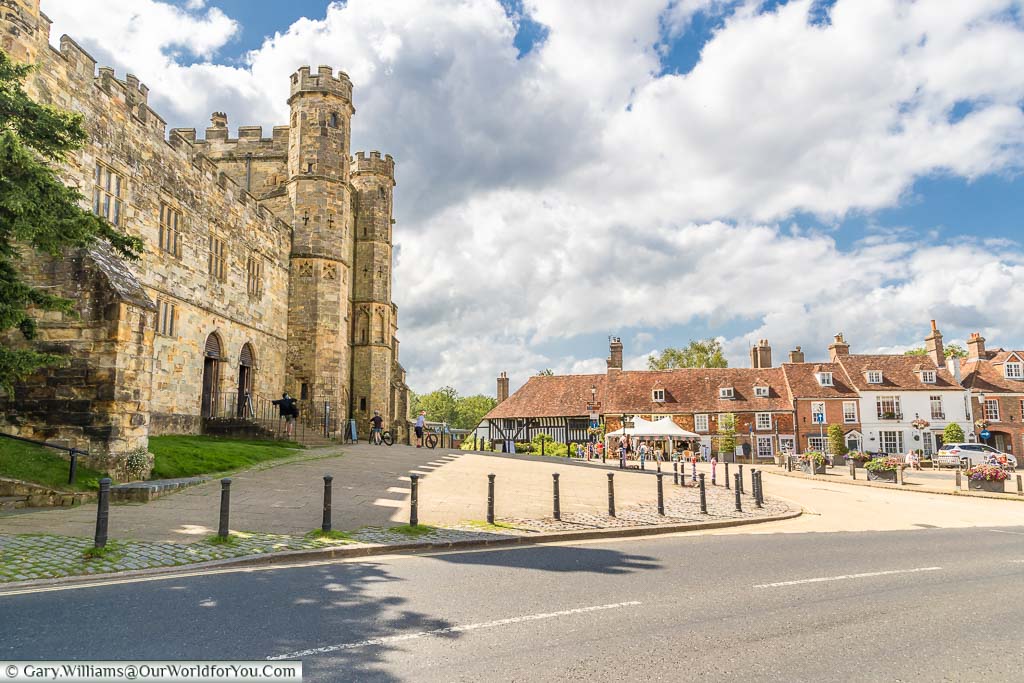Strolling in the footsteps of valiant Knights
The captivating medieval castle at Bodiam in East Sussex transports you to a fairy-tale world of knights in shining armour galloping through the early morning mist. Bountiful feasts laid out at lavish banquets and crackling open fires permeating amidst impenetrable stone walls.
Or perhaps it’s just me, but Bodiam Castle is so enchanting, its symmetrical posture stands steadfast and casts a majestical figure with its encompassing moat.
Bodiam Castle may just be perceived as ruins; however, during the 14th century, the captivating fortress was the aspiration of many English knights.
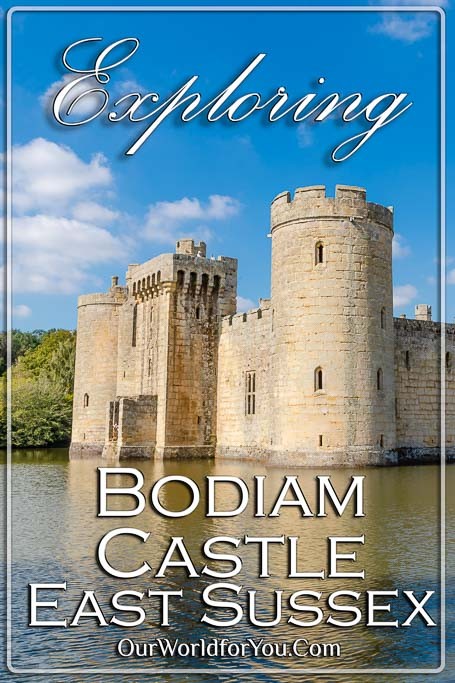
Where is Bodiam Castle?
How to get to Bodiam Castle
- By Train
The nearest mainline railway station is at Robertsbridge (5 miles) and Battle (7.5 miles). You will then need to catch a taxi.
Alternatively, if you are staying in Tenterden, you can hop on the historic seasonal Kent and East Sussex Heritage Railway to Bodiam. Then it’s just a short stroll to the castle.
- By Car
Bodiam Castle can be accessed from the A21and then east off the B2244. There’s a free car park for National Trust members, or parking charges apply to non-members.
A brief history on Bodiam Castle
Knights, Lords and the National TrustBodiam Castle is now lovingly managed by the National Trust after being bequeathed to them in 1926 by Lord Curzon and is a Grade I Listed Building.
The commanding moated citadel was built in 1385 by Sir Edward Dalyngrigge, a former knight of Edward III and a Knight of the Shire for Sussex. He fought against the French many times during the Hundred Years’ War. He was granted permission to erect the courtyard castle by Richard III.
Bodiam Castle is located near the banks of the River Rother. During the 14th-century was a much larger waterway where sailing barges were able to moor. Although Bodiam is not near the coastline, it would have formed part of a defence to protect England against the French.
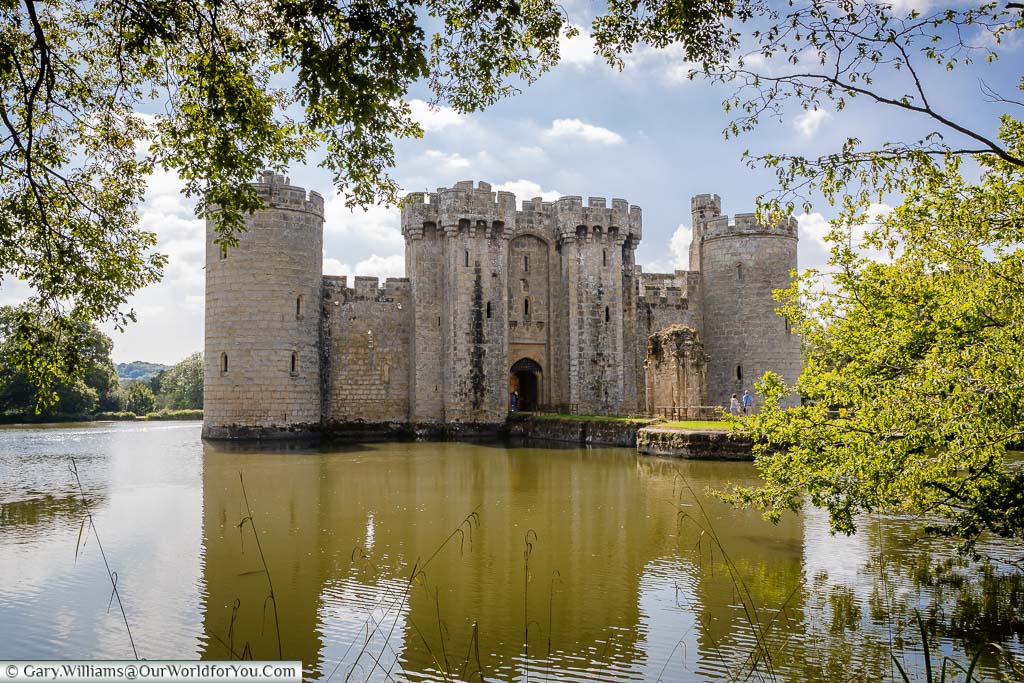
For Sir Edward Dalyngrigge and his wife, Elizabeth Wardedieu Bodiam Castle would have been a luxury dwelling and left others in no doubt of their status in English society.
Bodiam Castle is located near the banks of the River Rother. During the 14th-century it was a much larger waterway where sailing barges were able to moor. Although Bodiam is not near the coastline, it would have formed part of a defence to protect England against the French.
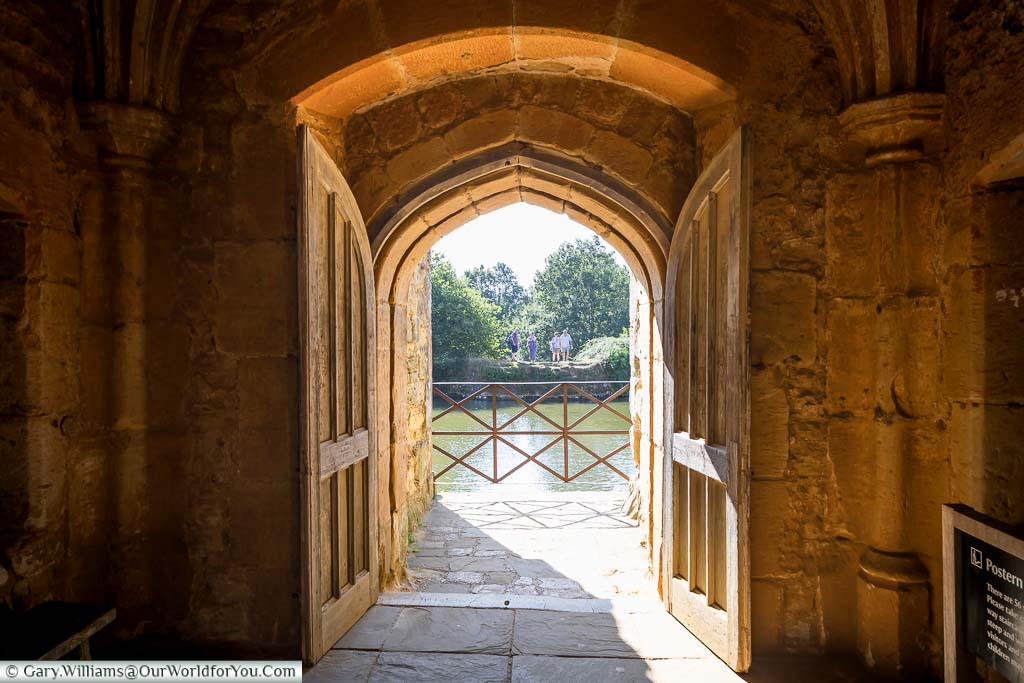
Fast forward to 1917, and Bodiam Castle was bought by Lord Curzon, the former Viceroy of India. He couldn’t bear to see the castle fall into disrepair of crumbling ruins. He undertook a considerable restoration programme until he bequeathed Bodiam Castle to the National Trust.
The National Trust continued with Lord Curzon’s project adding new roofs to the towers and gatehouse and maintains the charismatic castle we see today.
Approaching the captivating Bodiam Castle
A fortress with many tales to tell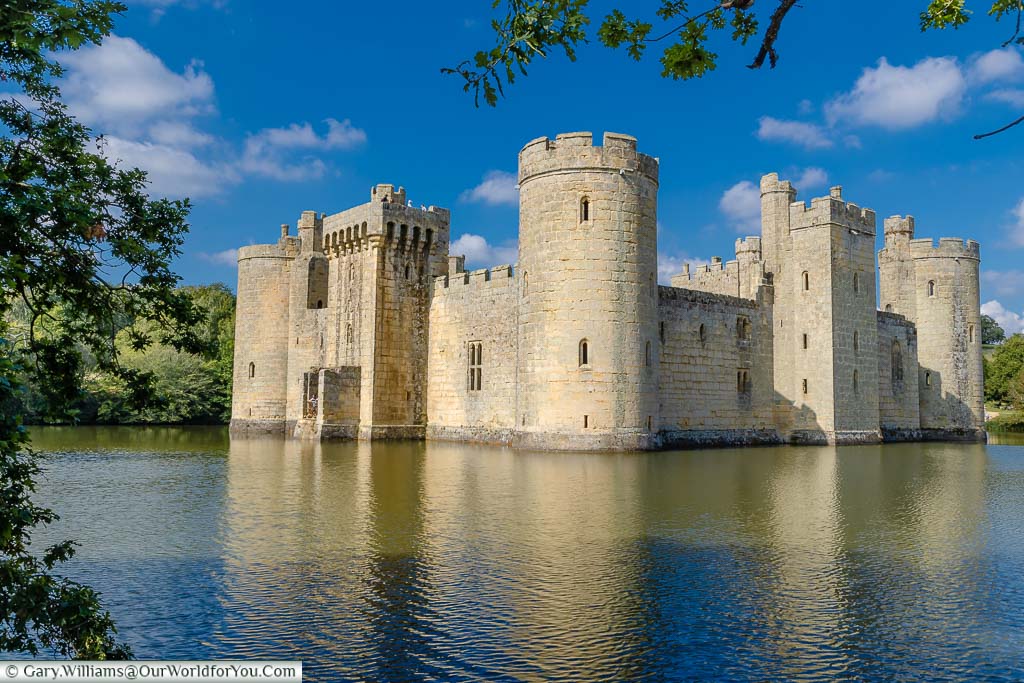
We follow the pathway around the castle’s west side and keep peeking through the bushes to get another glimpse. Although it isn’t long and the magical view of Bodiam reveals itself in all its glory.
With the charming moat encircling the four Wealden sandstone crenellated towers, you can almost imagine the iconic ‘bucket and spade’ sandcastle could have been fashioned on the Bodiam fortress.
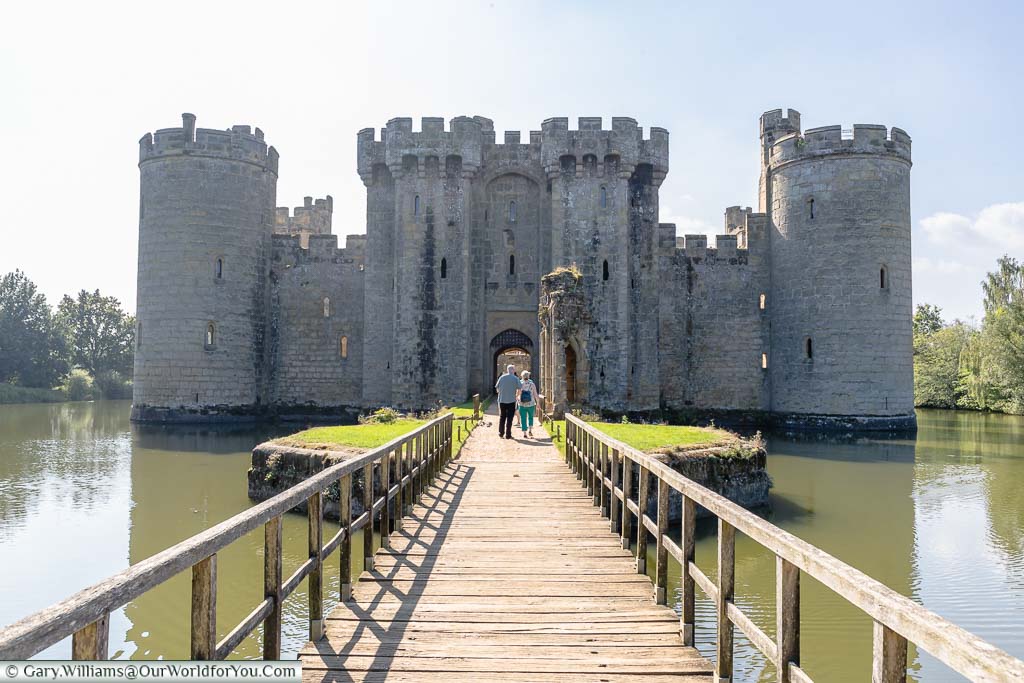
Where to stay ...
- The Abbey Hotel – Located within the historic and picturesque town of Battle, just 7.5 miles away. This delightful Grade II listed building has recently been refurbished.
You can also explore Battle Abbey, where the Battle of Hastings unfolded.
Entering Bodiam Castle Gatehouse
Halt, who goes there?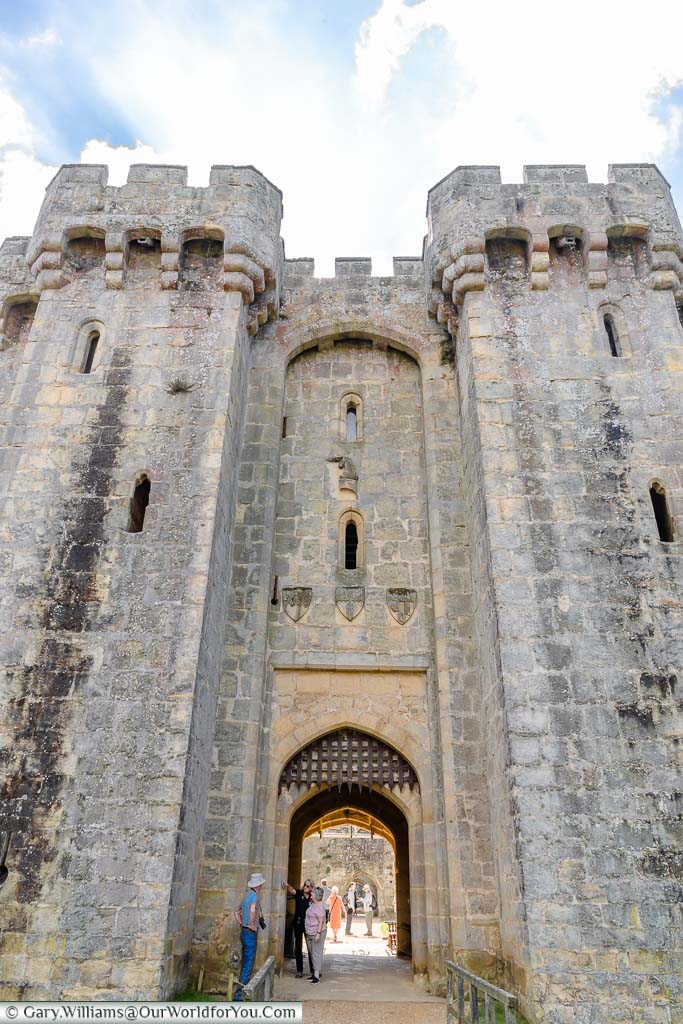
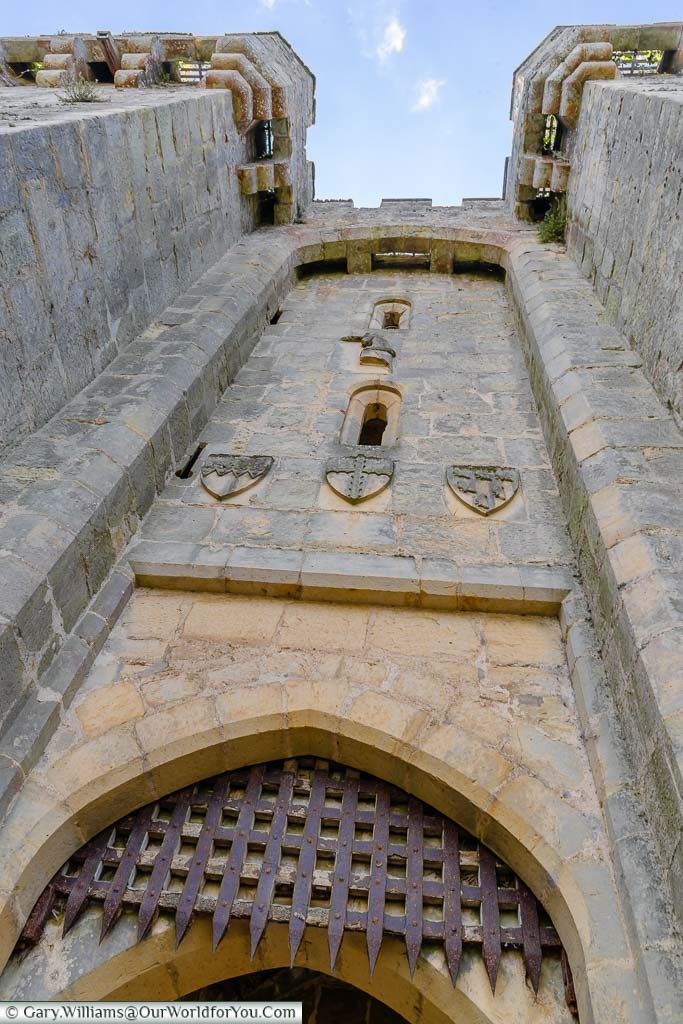
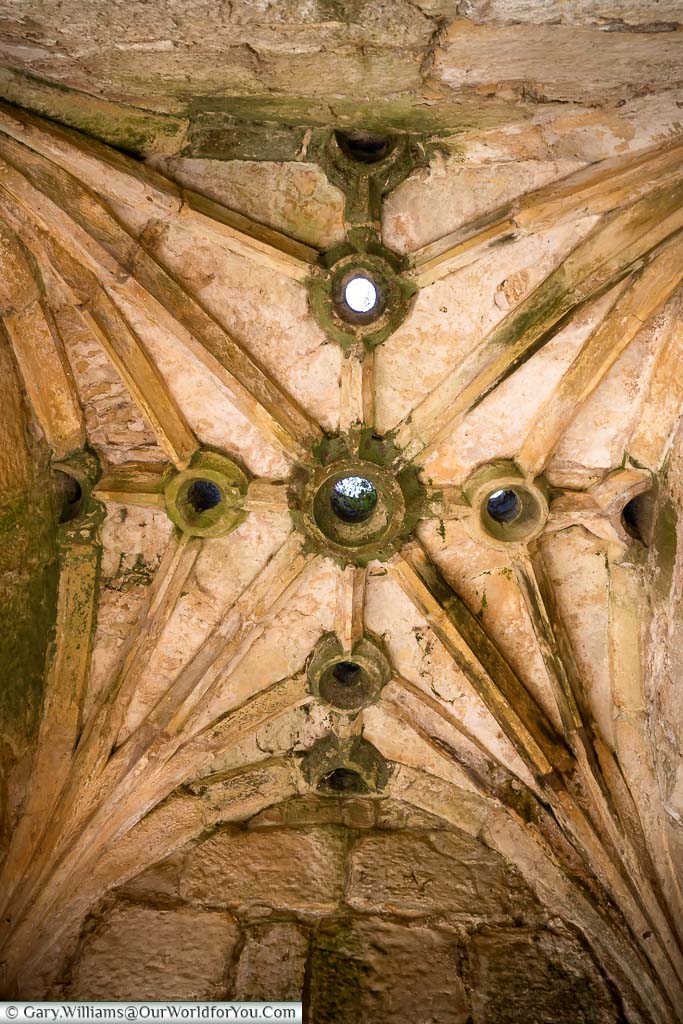
‘Murder Holes’ in Bodiam Castle Gatehouse
If you're intrigued by Sussex's fascinating past and weird and wonderful history around the county, then take a peek at "The A-Z of Curious Sussex".
You won't be able to put it down, you can pick it up for your Kindle or in good old paperback.
Exploring the ruins within Bodiam
If only ancient walls could talk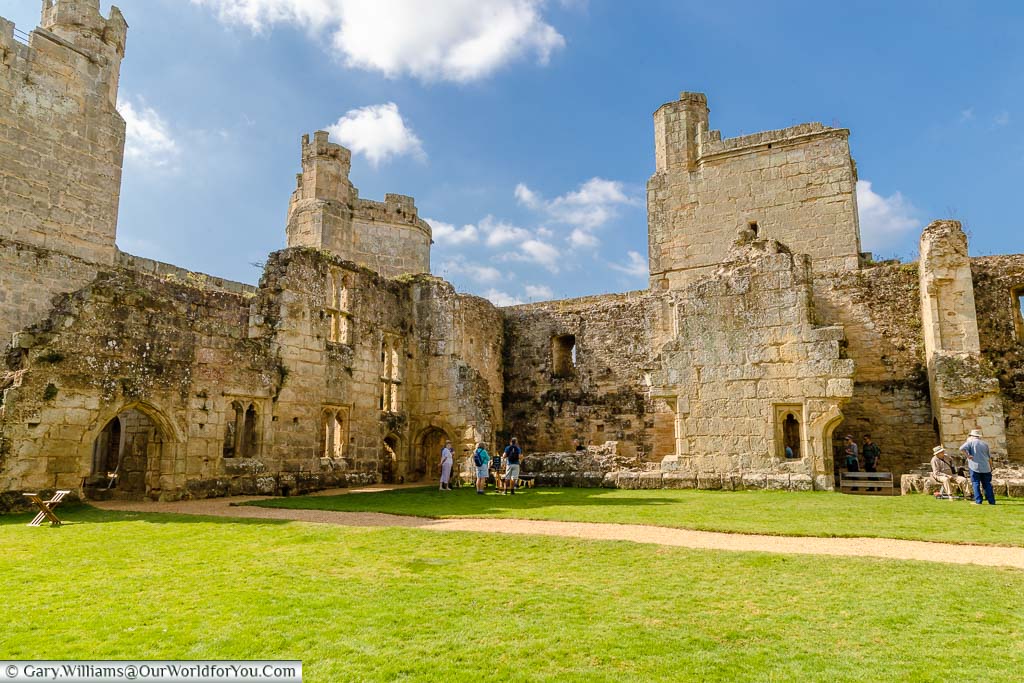
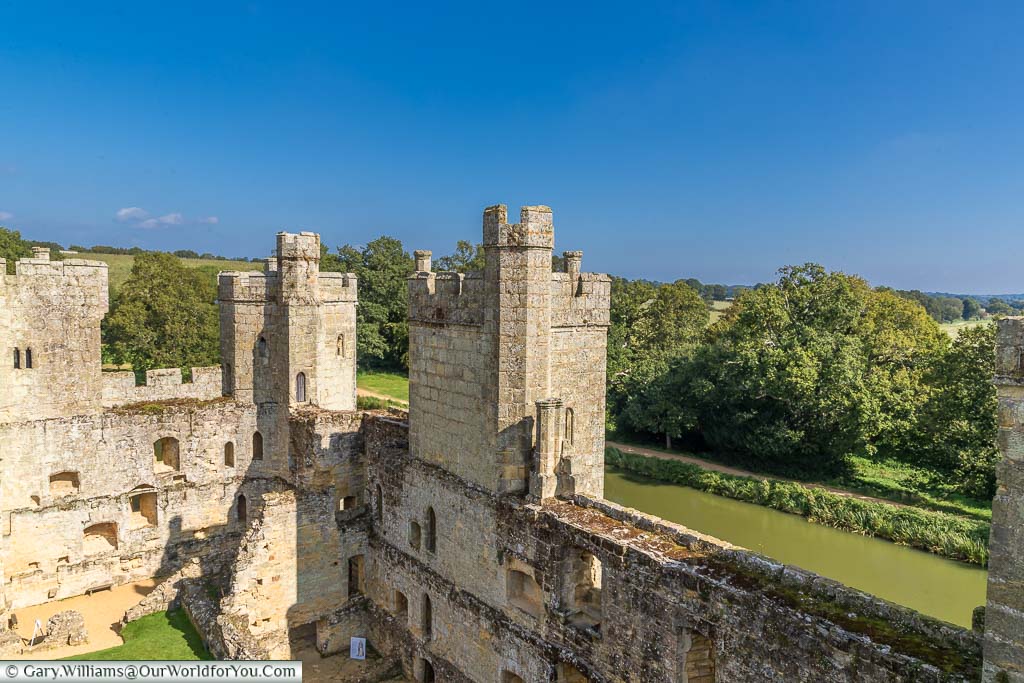
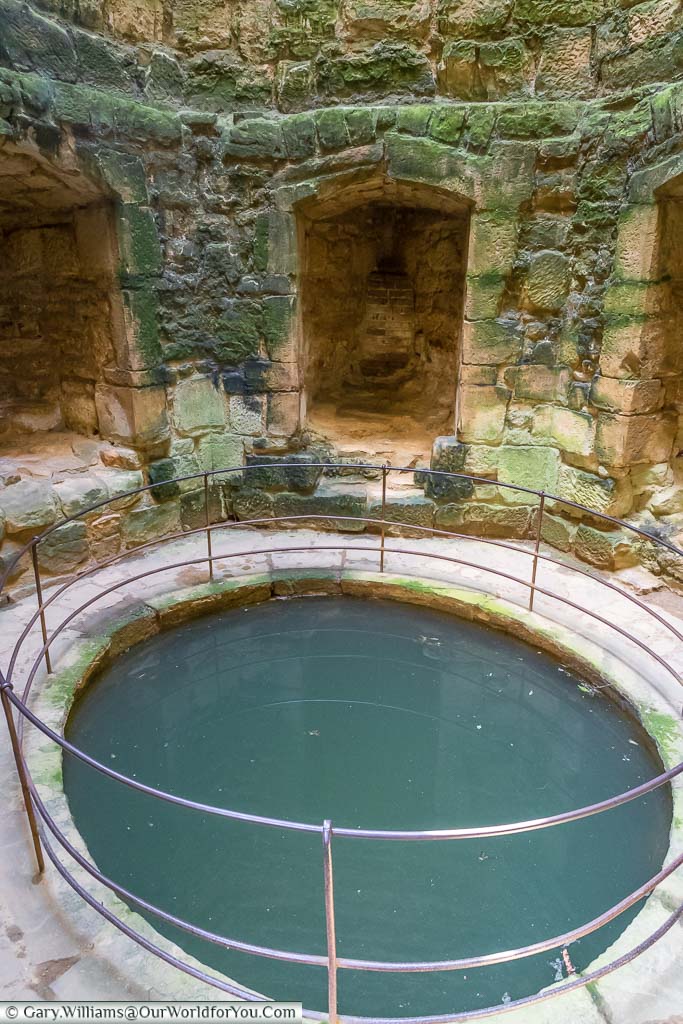
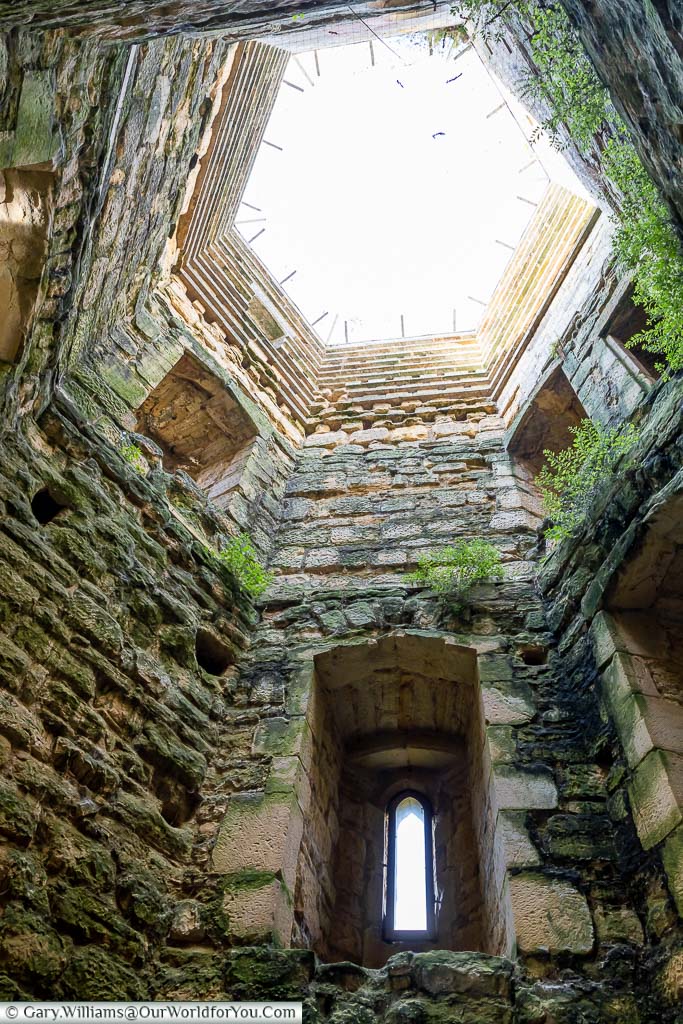
An unusual area just off the kitchen in the southwest tower is the Well Room. The large circular pool is believed to have been fed by a spring. However, the jury is out on how it was used centuries ago. It may have been a water source for cooking, drinking water or even a place to bathe.
In the northeast of Bodiam Castle was the Chapel; the distinctive arched windows are little that remains of this integral part of the castle.
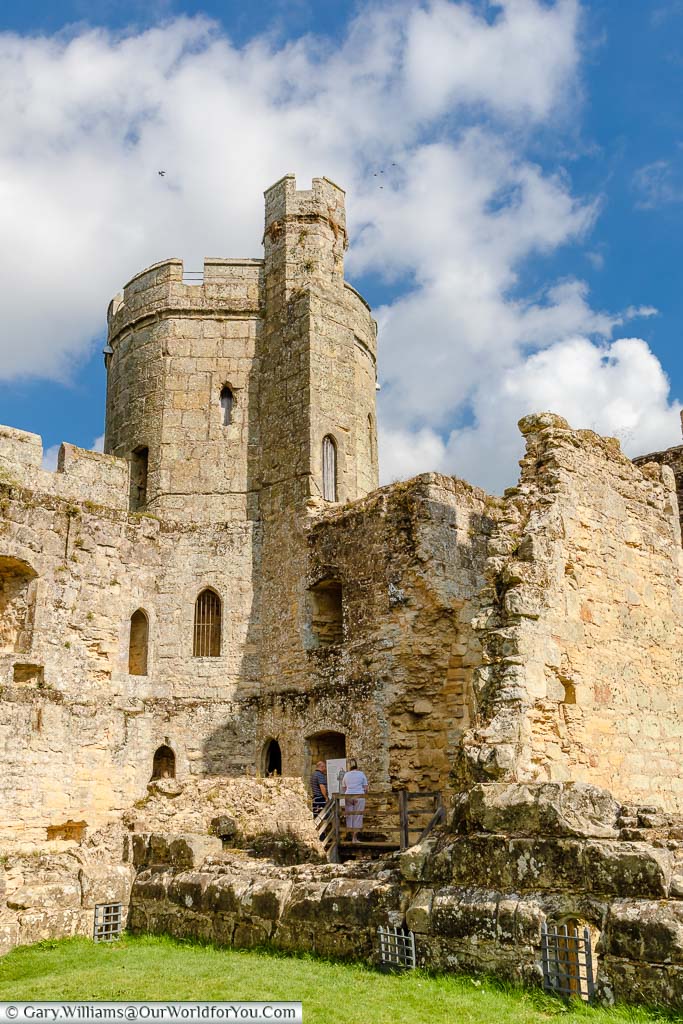
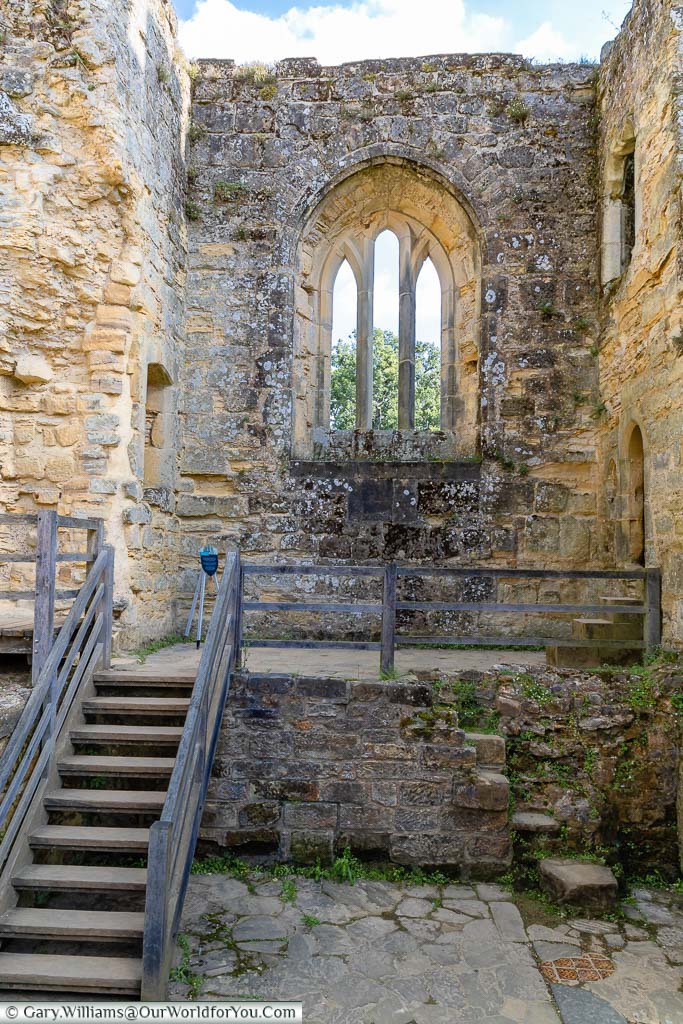
Hiking the East Sussex Countryside
Bodiam is located in East Sussex, nearby the historic town of Battle and the seaside town of Hastings. This region of Sussex is ideal for hikes as it is in the High Weald (AONB), an Area of Outstanding Natural Beauty. To explore the trails in this region of East Sussex, the Ordnance Survey map that will help you along the route is no. 124, ‘Hastings & Bexhill’.
Alternatively, why not purchase and download the OS Maps App, which covers all of Great Britain.
Climbing the Postern Tower
Look out for the ancient graffiti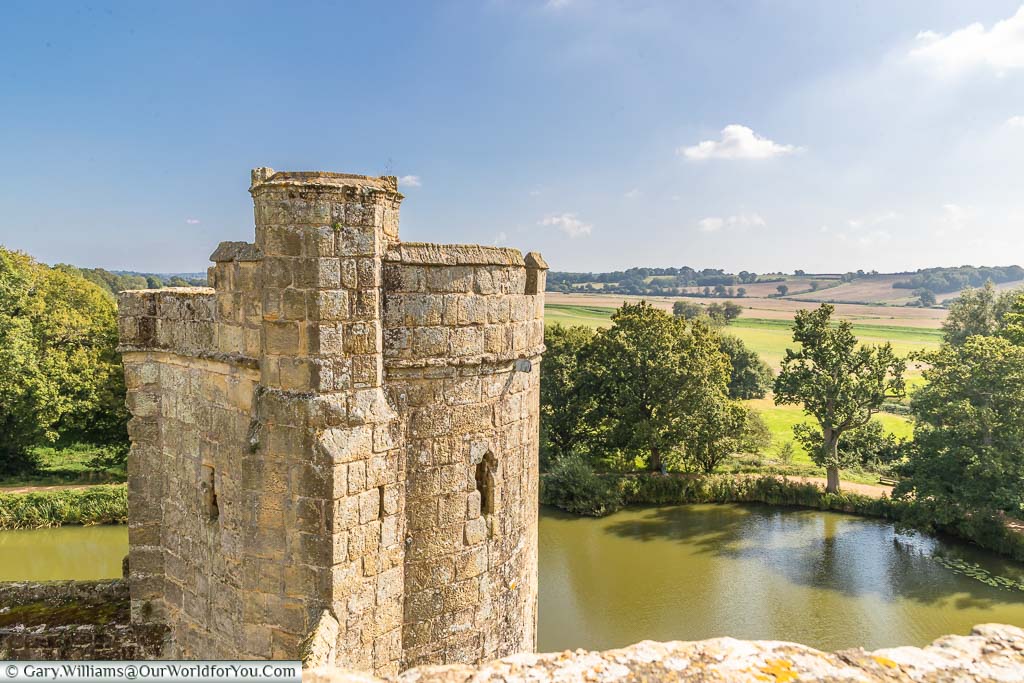
The square Postern Tower is at the back of Bodiam Castle and would have originally had a drawbridge for tradesmen to enter by. The Postern Tower and the Gatehouse are three storeys high, and you’ll notice the rest of the castle is only two.
The views from the top of the tower are wonderful; not only do you get a birds-eye view of the medieval ruins below, but you also get to see the picturesque East Sussex landscape beyond.
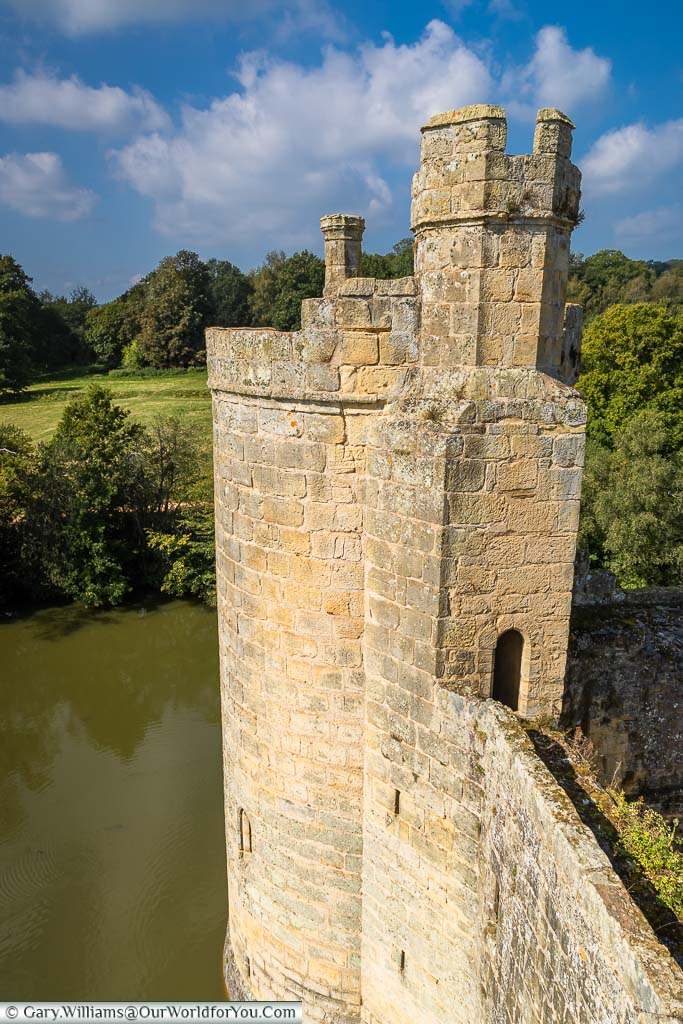
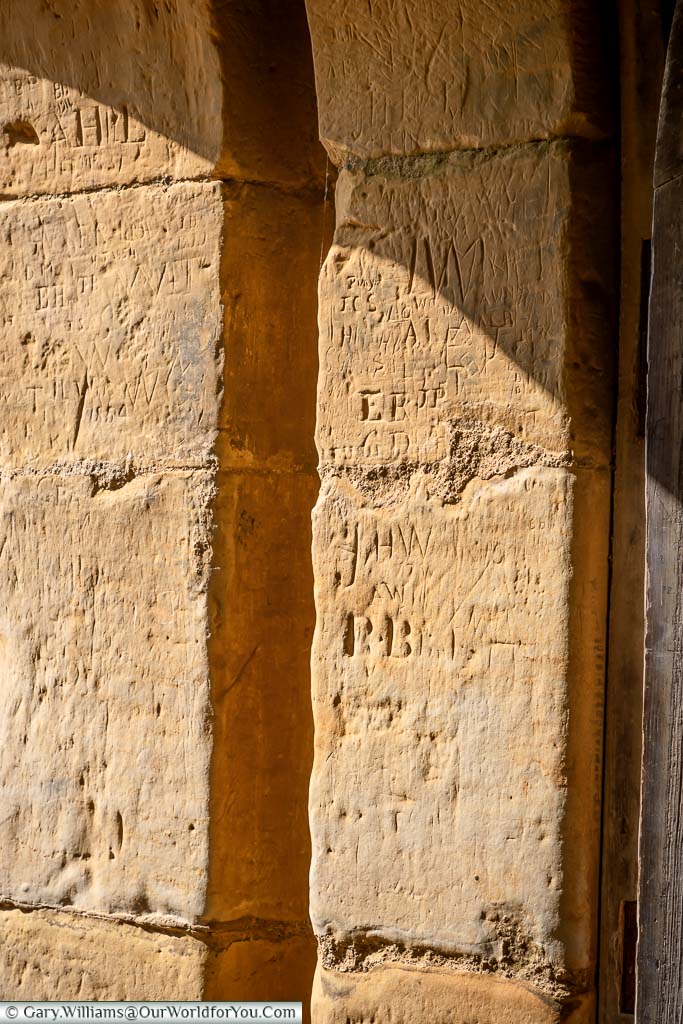
Our video from Bodiam Castle
The experience through our eyesWe have created a little YouTube video of our visit to Bodiam Castle. Why not take a look?
Also, why not subscribe to our YouTube channel and get the latest clips as we post them?
World War II Pillbox
Defending the River RotherThe building that undoubtedly wouldn’t have escaped your attention is the Second World War pillbox.
Initially, it may look slightly out of place. Still, I feel it adds a distinctive contrast between the commanding 14th-century walls of protection at Bodiam Castle and defences used during the early 1940s.
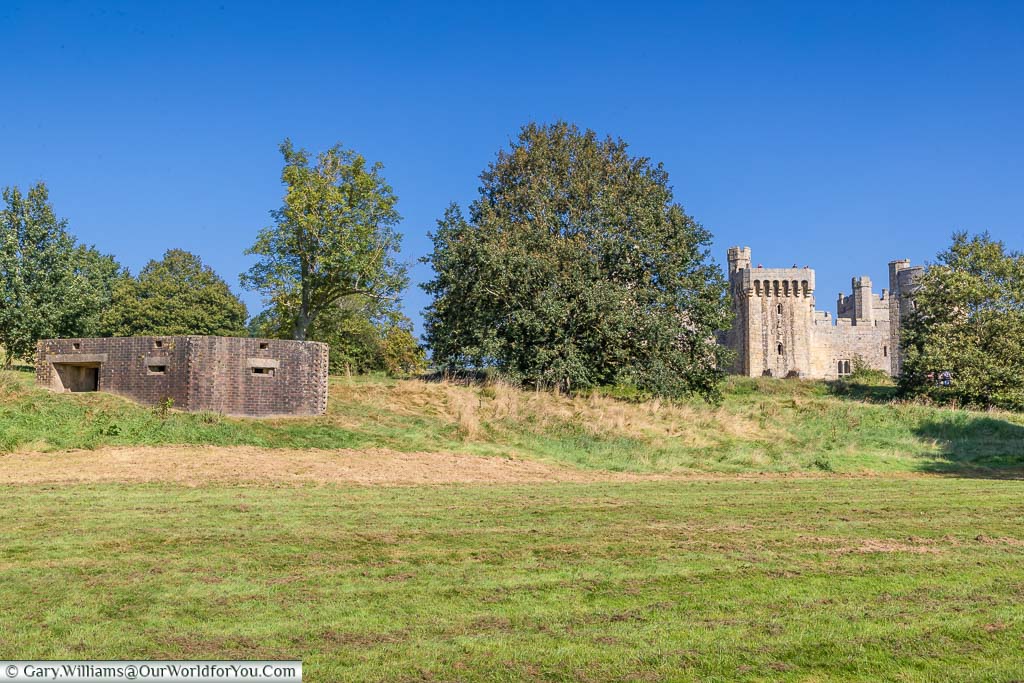
Discovering more of East Sussex
Kent and East Sussex Railway
Arrive at Bodiam Castle in style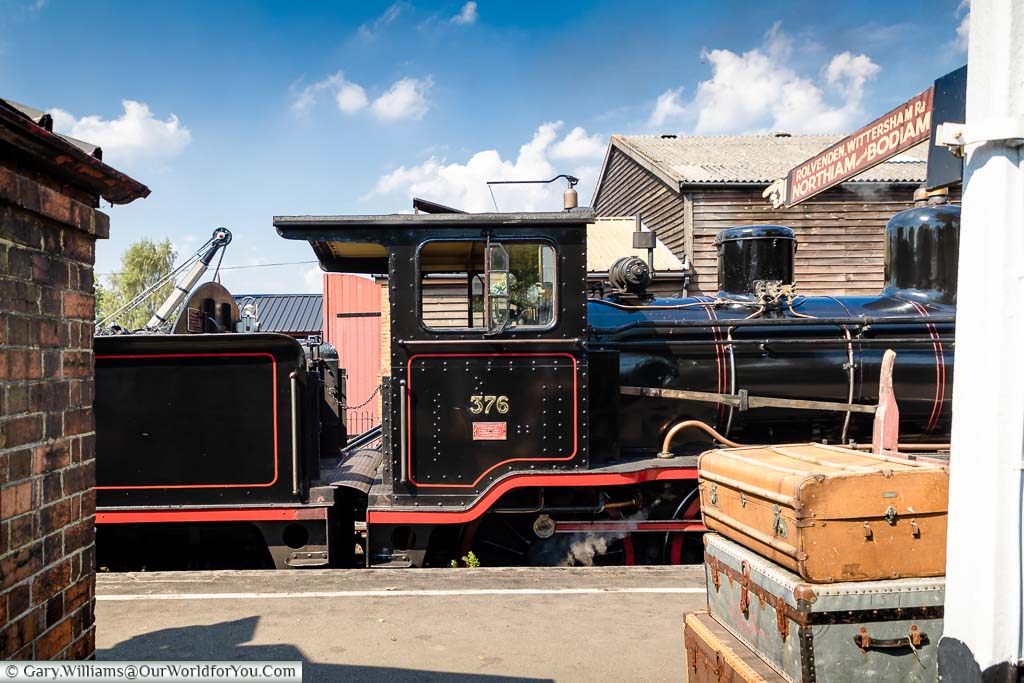
From Tenterden, catch the heritage line from the quaint nostalgic railway station, sit back, relax and enjoy the sound of the steam train chuff, chuffing through the Weald countryside. It’s such a pleasant way to travel.
When you arrive at Bodiam Station, it’s just a short walk to Bodiam Castle. However, before you leave, visit the hop-pickers hut at the back of Bodiam station. Local families and their relations from London would spend their holidays picking the hops for the local breweries. Not only were you earning a little money, but you could also spend time with your loved ones.
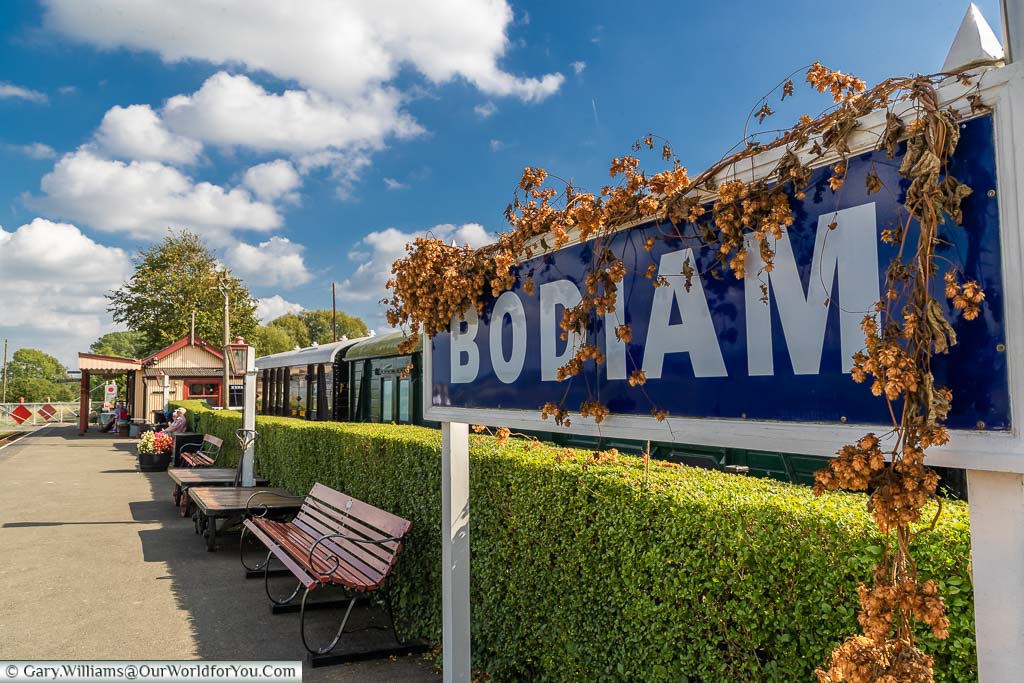
* This post may contain links to affiliated sites where we earn a small commission at no additional charge to you.
